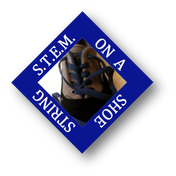|
How do we foster creativity in our students, and why is it important? Stephan Turnipseed, president of Lego Education, North America, says it best: “Creativity is at the foundation of innovation and is vital for our country's growth and development. Creativity fuels all areas of our country's economy and prosperity.”
0 Comments
Imagine teaching 64 students from 2nd grade through high school level in one room. That would be the ultimate challenge for differentiated instruction. However, that is what I faced every Friday in my science class this year.
Recently I ran across an article by Sarah Wiggins titled “What is STEM and why should I teach it?” (http://www.morethanaworksheet.com/2015/06/01/what-is-s-t-e-m-and-why-should-i-teach-it/)
In the article, Ms. Wiggins listed her top ten reasons for making STEM instruction the foundation for your math and science curriculum. 1. STEM has real world application 2. STEM fosters problem-solving skills  There are two undeniable facts about S.T.E.M. instruction (science, technology, engineering, and math). One is that it has blossomed in recent years. The second is that it can be expensive. Robotics kits, S.T.E.M. labs, computers, and other tools don’t come cheaply. However, there are ways to get a lot of S.T.E.M. mileage with minimal investment. Over the coming months, I will be delivering my “S.T.E.M. on a Shoestring” presentation at two conferences. Here are some ways to implement S.T.E.M. instruction for pennies. Click the links to see examples. When my son was about a year old, he took his first steps. My wife and I sat a few feet apart and he took turns stumbling from one of us to the other. He wasn’t very steady on his feet. He staggered and fell down. Yet his failure never caused him to give up. In fact, his grin belied his rickety efforts. He laughed even when he fell down. We simply helped him back up and he tried again. He was excited by his progress instead of being discouraged by his lack of expertise.
If I had to give him a grade on walking, he would have earned an F that day based on standardized benchmark data for the A dozen years ago I had an eighth grader who didn’t know his multiplication facts. That’s not unusual. What was surprising is that he was my top math student. Four years later he received a six-figure scholarship to a major university where he
 That biting joke begs an important question: how do you think career options will look for your current students when they leave high school? I just returned from the California League of Schools Technology Conference in Monterey and attended a session by John Merris-Coots ([email protected]) of the California Career Resources Network (CalCRN). Mr. Merris-Coots outlined the resources Dear parents,
As we begin a new school year, you have probably heard much about the new Common Core State Standards. Some of what I’m hearing is true, and some is not, so I’d like to dispel some myths about the standards and address concerns you might have. In my early years of teaching math I was faced with the problem of having to fill a few days of class time as we concluded a unit just prior to Christmas vacation. Not wanting to start the new unit, I decided to have the students illustrate their learning by completing a project on the linear functions unit that they had just completed.
|
AuthorBrad Fulton is an award winning teacher and nationally recognized provider of professional development with over three decades of experience in education. Categories
All
Archives
December 2017
|
TTT Press |
What our customers are saying:
|
© 2013 by Brad Fulton and TTT Press

 RSS Feed
RSS Feed